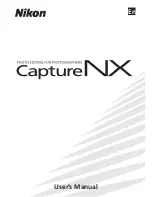
Managing the Switch
ExtremeWare XOS 11.1 Concepts Guide
60
In addition, the SNMPv3 target and notification MIBs provide a more procedural approach for
generating and filtering of notifications.
SNMPv3 objects are stored in non-volatile memory unless specifically assigned to volatile storage.
Objects defined as permanent cannot be deleted.
NOTE
In SNMPv3, many objects can be identified by a human-readable string or by a string of hexadecimal octets. In
many commands, you can use either a character string, or a colon-separated string of hexadecimal octets to specify
objects. To indicate hexadecimal octets, use the keyword
hex
in the command.
Message Processing
A particular network manager may require messages that conform to a particular version of SNMP. The
choice of the SNMPv1, SNMPv2c, or SNMPv3 MP model can be configured for each network manager
as its target address is configured. The selection of the MP model is configured with the
mp-model
keyword in the following command:
configure snmpv3 add target-params [[hex <hex_param_name>] | <param_name>] user [[hex
<hex_user_name>] | <user_name>] mp-model [snmpv1 | snmpv2c | snmpv3] sec-model [snmpv1
| snmpv2c | usm] {sec-level [noauth | authnopriv | priv]} {volatile}
SNMPv3 Security
In SNMPv3 the User-Based Security Model (USM) for SNMP was introduced. USM deals with security
related aspects like authentication, encryption of SNMP messages, and defining users and their various
access security levels. This standard also encompasses protection against message delay and message
replay.
USM Timeliness Mechanisms
An Extreme Networks switch has one SNMPv3 engine, identified by its
snmpEngineID
. The first four
octets are fixed to 80:00:07:7C, which represents the Extreme Networks vendor ID. By default, the
additional octets for the snmpEngineID are generated from the device MAC address.
Every SNMPv3 engine necessarily maintains two objects:
SNMPEngineBoots
, which is the number of
reboots the agent has experienced and
SNMPEngineTime
, which is the local time since the engine reboot.
The engine has a local copy of these objects and the
latestReceivedEngineTime
for every authoritative
engine it wants to communicate with. Comparing these objects with the values received in messages
and then applying certain rules to decide upon the message validity accomplish protection against
message delay or message replay.
In a chassis, the
snmpEngineID
is generated using the MAC address of the MSM with which the switch
boots first.
The
snmpEngineID
can be configured from the command line, but once the
snmpEngineID
is changed,
default users will be reverted back to their original passwords/keys, and non-default users will be reset
to the security level of no authorization, no privacy. To set the
snmpEngineID,
use the following
command:
configure snmpv3 engine-id <hex_engine_id>
Содержание ExtremeWare XOS 11.1
Страница 16: ...Contents ExtremeWare XOS 11 1 Concepts Guide 16...
Страница 20: ...Preface ExtremeWare XOS 11 1 Concepts Guide 20...
Страница 21: ...1 Using ExtremeWare XOS...
Страница 22: ......
Страница 78: ...Managing the ExtremeWare XOS Software ExtremeWare XOS 11 1 Concepts Guide 78...
Страница 168: ...Virtual LANs ExtremeWare XOS 11 1 Concepts Guide 168...
Страница 200: ...Policies and ACLs ExtremeWare XOS 11 1 Concepts Guide 200...
Страница 252: ...Security ExtremeWare XOS 11 1 Concepts Guide 252...
Страница 265: ...2 Using Switching and Routing Protocols...
Страница 266: ......
Страница 294: ...Ethernet Automatic Protection Switching ExtremeWare XOS 11 1 Concepts Guide 294...
Страница 354: ...Extreme Standby Router Protocol ExtremeWare XOS 11 1 Concepts Guide 354...
Страница 416: ...IP Multicast Routing ExtremeWare XOS 11 1 Concepts Guide 416...
Страница 417: ...3 Appendixes...
Страница 418: ......
Страница 432: ...Software Upgrade and Boot Options ExtremeWare XOS 11 1 Concepts Guide 432...
















































